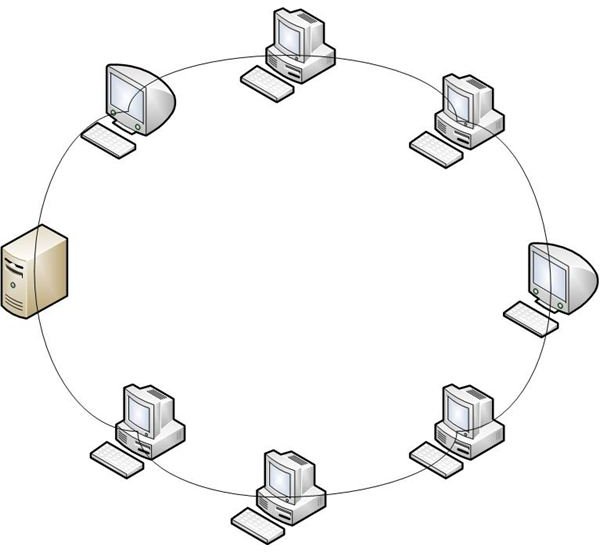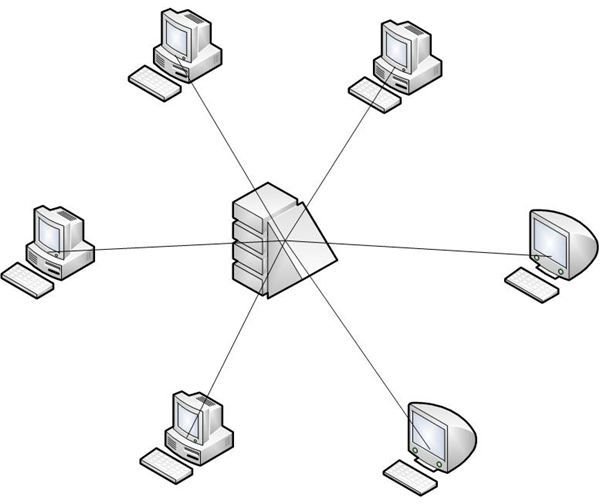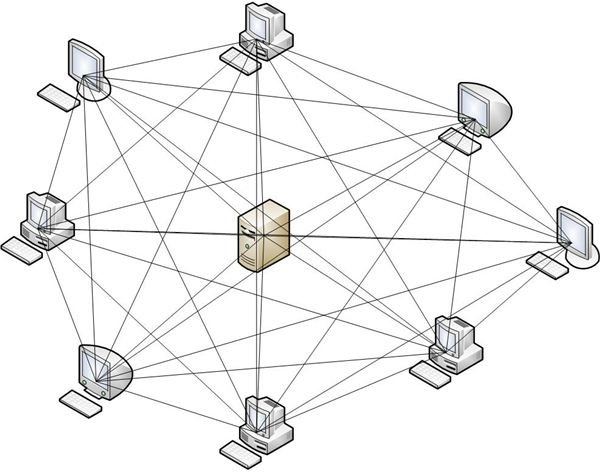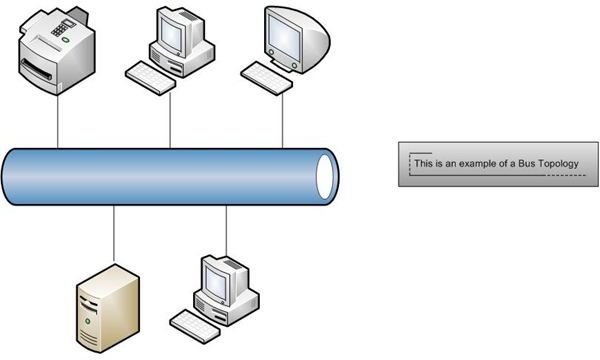Understanding Networking Topologies
Different types of Topologies
Networks consist of two main categories of topologies. One is the logical topology and the other is the physical topology. The topologies are a term to describe the connections between devices on the network. Logical topologies deal with how the signals are transmitted and physical topologies deal with the physical connections between the devices. The Physical topology consists of the bus topology, ring (or Token Ring) topology, star topology, and mesh (or hybrid-star) topology. The physical topology can contain both wired and wireless connections.
Bus Topology
A bus topology can be described like a street in your city. It runs down the middle, and each house has a driveway that connects to the street. Likewise, in a network, each device has a connection to the bus, which runs between them all.
Token Ring Topology or Ring Topoology
In a Token Ring topology, the computers are all connected together in a circle. The data will only travel in one direction, and a token is used to determine who has permission to send. Commonly you will see two rings (one moving in each direction) to increase the speed of the network and allow multiple communications at one time. Coaxial cable is commonly used in Rings. A major drawback to this topology is if one device fails, the entire network fails. Imagine a string of lights, where one burns out, so the rest shut down.

Star Topology
In a Star Topology, all of the devices are connected to one central device (the hub). The hub will control the access and prevent the collisions. An example of this is having your computers connected to a central router or modem that provides NAT and routing for the LAN. A drawback to this topology is if the central node (hub) fails, then the network fails too.

Mesh (or Hybrid) Topology
A mesh or hybrid topology is a variation of the star topology. You have the central hub, but each device is also connected to each other. Because of the amount of cables that are necessary and cost, this is only practical in small networks. You may see variations of this, where part of the network is a mesh, and the rest is the star topology, or where you have multiple “mini-mesh” networks that are connected through a central hub.

Logical Topologies
The logical topologies handle the prevention of collisions in the network and the role of traffic cop (determining who has permission to communicate). Collisions in the bus topology are prevented by utilizing CSMA/CD (Carrier Sense Multiple Access/Collision Detection). The computers listen on the wire for traffic, and will send their packet if none is detected. If a collision occurs, the two computers involved will generate random amounts of time to wait before trying again. As mentioned above, the token is used in the ring topology to prevent collisions. The central hub deals with the collisions in the star and mesh topologies (along with the individual connections in the mesh topology).
Final Thoughts
Portions of this information were paraphrased from the Network + preparation book by Michael Myers and Bryan Schwarz. (Network + Certification Exam Guide) https://www.amazon.com/Network-All-One-Certification-Guide/dp/0071345639/ref=sr_1_1?ie=UTF8&qid=1266390278&sr=8-1 Although, I recommend getting a more current edition. The topologies will give you a basic idea of how the devices on your network interact with each other.
